Inside NASA’s bid to make spacecraft as small as possible
The NASA probe’s retrorockets pressed desperately against the apricot afternoon skies of Mars. It was November 26, 2018, by Earth’s calendar. As the InSight lander worked its way down, slowing from 12,000 miles per hour to a graceful landing, overhead a pair of robots coursing through space monitored its progress. Though InSight was the size of a grand piano and the twin Mars Cube One spacecraft the size of cereal boxes, the lander was, in some sense, the easier challenge. Since the 1970s, we’ve sent a lot of big things to Mars. Until that moment, we had never sent something so small.
Engineers designed the tiny travel companions to act as radio relays, sending InSight’s telemetry back to Earth. Technically their job was a nice-to-have: InSight was landing autonomously, and it would communicate with Earth via the Mars Reconnaissance Orbiter after touching down.
But just making it this far heralded a new age in space exploration. And engineers were only more pleased when the Deep Space Network, a global array of radio antennas, picked up the tiny explorers’ real-time signals from Mars. InSight was healthy, said MarCO. Its parachute had deployed, the cubes added. The lander had separated from the back-shell and chute; it was on rockets now. One minute later, it was done. InSight, the small spacecraft reported, had survived.
In this diminutive mission, NASA as an agency, and the community of planetary science researchers, caught a glimpse of a future long sought: a pathway to much more affordable space exploration. Each MarCO was the smallest, cheapest spacecraft ever to fly beyond the Earth-moon system. The pair cost less than $20 million to construct, launch, and operate. If engineers could build more such spacecraft—and make them even more capable in the process—they’d be an attractive alternative to multibillion-dollar flagships that launched only every 20 years or so, or even near-billion-dollar probes like InSight.
The media ran with the vision. The Wall Street Journal championed MarCO as the vanguard of a new era of “swarms of tiny probes prowling the solar system.” The New York Times reported the potential for “whole fleets of MarCO-like satellites” exploring deep space.
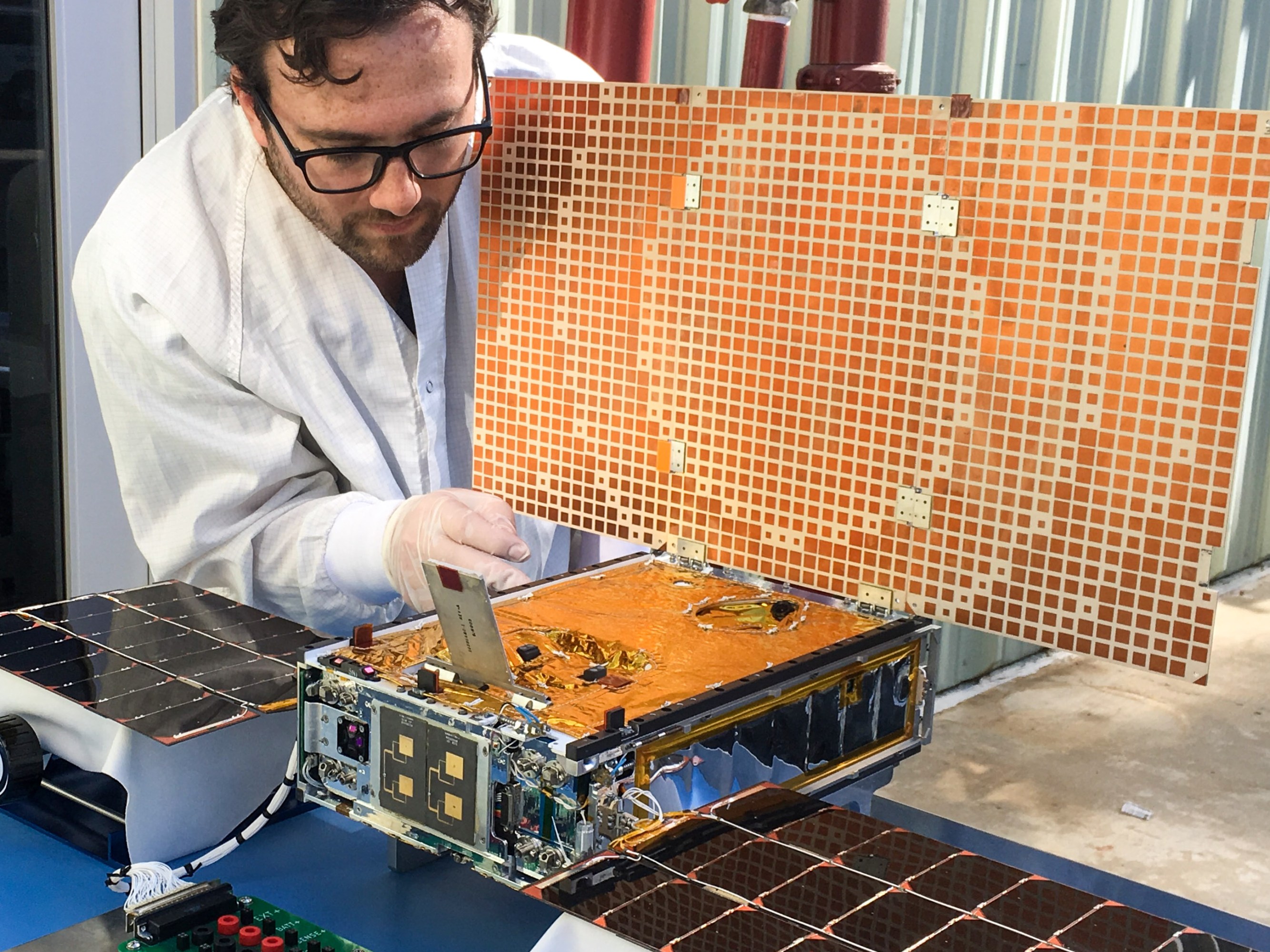
NASA had been quietly building toward the notion of small solar system explorers. In addition to greenlighting MarCO, it had launched a program to develop other small planetary probes. As MarCO sped toward Mars, making trajectory maneuvers and phoning home like any large spacecraft,Thomas Zurbuchen, then associate administrator for NASA’s science mission directorate, declared that every rocket launched by NASA’s science program would include a payload adapter for small spacecraft to hitch a lift. “We’re not going to ask whether we need it,” he said. “You have to convince us that we don’t need it.”
There was a catch, though—one that NASA soon had to grapple with. Miniaturization can only go so far before it comes to a crashing halt against some very fundamental laws of physics.
“Have you ever heard of a wicked problem?” Alfred Nash asks me.
Five years after the InSight landing, we are in his office on the third floor of the formulation building at the Jet Propulsion Laboratory, NASA’s sprawling research and development facility in Pasadena, California. The room is sparsely decorated. He recently changed offices, and many of his things are still in boxes stacked off to the side.
In 1973, he explains, two professors at UC Berkeley published a paper asserting that there are two kinds of problems. One type—the “tame” kind—can be solved with science and brute-force engineering. But there is another sort that is resistant to being solved with math and physics. In these complex problems, a group of stakeholders with differing value propositions want distinct and oftentimes contradictory outcomes. These are the “wicked” problems.
Nash says that when people think of formulating a space mission—turning a probe from scribbles on a notepad into hardware on a lathe—they imagine only the system-level design of a spacecraft. “What valves am I going to use? That kind of thing. But the problem is much, much more complex than that,” he says. It is, indeed, a wicked problem, with scientists, engineers, and project managers pulling projects in conflicting directions.
Nash helps design missions for a living. When planetary scientists from NASA and academia want to send robots somewhere strange to study something hard, they come to him and a small cadre at the JPL Innovation Foundry, not only to develop the spacecraft but to figure out what scientific measurements of a celestial object they can actually make given the budget and mass constraints that limit instrument payloads, and where such data would fit in the NASA portfolio.
In one form or another, Nash has touched about half of all current JPL flight projects. Now, to show me what he’s talking about, he grabs a marker and draws a Venn diagram of three circles on his office whiteboard. He labels one desirability, one feasibility, and one viability. Where the three intersect, he writes the word possibility. “Rocket science is not the hard part of this job,” he says. Before any spacecraft flies, it must satisfy three conditions: a scientist must need the data it can collect, engineers must be able to build it, and NASA must be willing to pay for it. Each step in the development of the mission goes toward strengthening those three things simultaneously—and not everyone can get everything they want. The zero-sum principles of game theory apply; no player can do better without somebody else doing worse. “That’s mission design in a nutshell,” he says.
In developing a spacecraft, Team X engineers for each subsystem work in parallel. You’re building a house all at once. While someone is building the chimney, someone else is building the roof and another is designing the air-conditioning system.
NASA science missions generally come in two flavors: directed and competed. The James Webb Space Telescope was a directed mission. NASA headquarters told Goddard Space Flight Center what it wanted built, and for how much. Directed missions tend to be high dollar and high profile. Meanwhile, the asteroid mission Psyche, which launched in October just after this issue went to press, took shape as a competed mission. NASA headquarters issued an “announcement of opportunity” in 2014 for institutions to propose deep-space robotic missions that cost less than $450 million. Researchers in government, industry, and academia developed missions that fit within those parameters. After 28 proposed missions were reviewed in an independent process, the agency selected Psyche, built by JPL, and Lucy, a mission developed by the Southwest Research Institute in Boulder, Colorado. It has already launched and will explore asteroids that share Jupiter’s orbit.

Most prominent within the Innovation Foundry are two groups that work on such competed missions, striving to turn an inkling of an idea for a spacecraft into a concept mature enough for NASA to select for flight. Nash leads the A-Team (the A stands for “architecture”), which can bring a space mission from a mere notion to a detailed study with sharply defined science objectives and a plan for how to achieve them. Afterward, a group called Team X takes it from there, using the mission plan to design the actual spacecraft.
JPL created Team X in 1995, during NASA’s so-called Faster, Better, Cheaper era. The agency had recently established a planetary program called Discovery, whose initial purpose was to launch one low-cost, tightly constrained mission every 12 to 18 months. To keep up with such an aggressive cadence, the lab needed a way to design, analyze, and evaluate mission concepts rapidly. Team X ultimately developed a system in which experienced engineers, using extensive databases of spacecraft components as well as lessons learned from practically every mission going back to 1958, concurrently design a complete and credible science mission in a matter of days—a plan for an instrumented spacecraft able to make specific measurements at specific places for a specific cost.
In 2012, JPL stood up the A-Team to help scientists get a better grip on the science and architecture of their missions before subjecting them to the intensity of Team X. The A-Team, which meets in a room called Left Field (“because that’s where good ideas come from”), helps scientists develop testable hypotheses, determine the measurements and scientific instruments necessary to assess them, and work out the best type of mission to carry those instruments: perhaps it’s an orbiter, a flyby, or a six-wheeled, nuclear-powered car. In terms of Nash’s Venn diagram, the A-Team endeavors to sketch out a mission that sits in the middle: one that will give scientists the data they want, be something that engineers can build, and merit NASA’s approval to buy and fly.
After leaving Left Field, scientists take their proposed mission to the Team X project design center. For two or three days, they sit beside engineers in a room that looks something like a computer science classroom, with multiple rows of workstations. Signs emblazoned with words like “Propulsion,” “Cost,” Mechanical,” and “Telecom” sit atop each console. There, the sky is not the limit. You are going to make some very hard choices. Every NASA spacecraft is an expensive box of compromises. In one corner of the room, engineers have hung a sign describing the five stages of grief.
Every decision the spacecraft designers make has cascading effects. Science goals affect the instrument payload necessary for a successful mission. The instrument payload affects the command and data subsystems (which handle signals sent from Earth and data to be returned). This, in turn, affects spacecraft telecommunications hardware (which performs the actual transmissions). It can affect the power necessary to keep the spacecraft alive. And so on. If scientists desire something as seemingly simple as a higher-resolution image, dominoes can fall in such a way that the spacecraft can no longer regulate its fuel temperature or is too heavy to launch.
In developing a spacecraft, Team X engineers for each subsystem work in parallel. You’re building a house all at once. While someone is building the chimney, someone else is building the roof and another is designing the air-conditioning system. Because each spacecraft subsystem affects every other, consoles are arranged so that the people who need to talk to each other can lean over and chat easily. Periodically, the team checks to see whether the spacecraft design “closes”—whether the myriad parts of the system work with each other to form an internally consistent whole that achieves its objectives given the space provided and for the correct price.
These studies, which generally take three days or less, can be intense for would-be mission teams. “You’re sitting there starstruck,” says Lindy Elkins-Tanton, the principal investigator for Psyche, a mission matured in the Innovation Foundry. “All the consoles with all the experts are manipulating subsystems, and numbers are clicking this way and that, and mass and power and dollar totals are changing, and the experts are shouting back and forth with each other.” If we use this trajectory, how much xenon do you need? If we measure this instead of that, how do your power needs change? What mass is that instrument? What kind of orbit control will achieve that? She says it has an energy similar to Mission Control, in terms of focus and import.
The systems do not always close—they didn’t at first with Psyche, even after two rounds with Team X. Scientists often must reconsider their goals in the face of mass, power, fuel, or funding.
“During the process, I was feeling really good,” Elkins-Tanton says. “We had made the hard decisions, we brought really useful information, we could get the power, we could get the mass—and then cost came through way above the cost cap. I almost couldn’t believe it. I just thought, ‘That’s not possible.’” Eventually, the Psyche team opted to use an off-the-shelf spacecraft bus, the component that forms the main body of the spacecraft. It was much less expensive than the custom-made bus they’d originally planned to build, and that solved the cost problem.
“To me, the magic of Team X is it gives you structure, and it gives you the perspective of what a mission looks like [to] a disinterested outside party,” she says. A team of scientists can go into Team X having convinced each other of the rightness of their plan, their prospective payload, and the measurements they intend to make. In some of those cases, she notes, “it is very important for someone to tell you, I’m sorry, but that does not work.”
Mission competitions are relatively rare. NASA released the announcement of opportunity for its most recent small, sub-billion-dollar Discovery-class mission in 2019. The agency will not likely release another until 2025 at the soonest—and Discovery missions are the competitions that run most frequently. Missions in the billion-dollar New Frontiers class are rarer still, and their destinations tend to be tied to a short list identified in the Decadal Survey, a community report written by planetary scientists that is released every 10 years. The most recent list, announced in 2022, called for missions to three targets in the Saturnian system as well as three missions to small bodies, one to the moon, and one to the surface of Venus.
If for no other reason, then, the availability of a new class of miniature, inexpensive spacecraft of the MarCO variety is deeply enticing to planetary scientists. In 2014, NASA headquarters created the Small, Innovative Missions for Planetary Exploration program, or SIMPLEx, to fund such small, high-risk (failure is an option)planetary science probes. In addition, in 2016 the agency commissioned concept studies for deep-space planetary science missions that could employ small satellites, individually or in constellations. There is no universally agreed-upon definition of a small sat, but they are generally less than 2,600 pounds (though they can be as small as a postage stamp). The most recent SIMPLEx announcement of opportunity limits small sats for non-Earth missions to dimensions that would fit on a specific payload adapter—about the size of a dorm-room fridge and a weight of 400 pounds. A “cube sat,” such as MarCO, is formally defined as one or more 10-centimeter-wide cubes, each weighing about four pounds.
Scientists submitted 102 proposals to the 2016 study, 19 of which NASA funded for further analysis. Two years later, Zurbuchen, then the associate administrator of NASA’s Science Mission Directorate, announced an annual $100 million investment in small sats, more than half of which would go toward planetary science missions.
And yet today, though small sats of every flavor circle the Earth, no swarms darken the skies of other worlds. Five years is not an enormous span of time in deep-space exploration, but JPL developed Mars Pathfinder, the first rover on another planet, in three. Surely building a Neptune orbiter the size of a shoebox should have been trivial in comparison, especially in an age of advanced semiconductors and reusable rocketry.
Earlier this year, the European Space Agency launched the Juice mission to study Jupiter and three of its moons. Next year, NASA will launch Europa Clipper to the same system, focusing on the moon that could potentially harbor extant life. Neither spacecraft will carry small sat companions. No follow-on to MarCO accompanied the Perseverance rover to Mars in 2020, either. (Perseverance did carry a four-pound helicopter to the surface, though neither NASA nor JPL described it as a cube sat.) Psyche was set to launch with cube sats, but NASA put the small spacecraft in cold storage when Psyche’s schedule slipped. Agency officials have hopes, but no plans, to launch them.
To the extent that the most recent Decadal Survey even mentioned cube sats or small sats, it was to request more money for them. It also recommended that NASA pursue a flagship Uranus orbiter and probe for $4.2 billion. But why put “all eggs in one basket” on a flagship, as Zurbuchen warned when announcing the $100 million program, when you could build many small sats?
In part, Nash explained, it is a matter of mission design. The simple novelty of a spacecraft—in this case, an extremely small spacecraft—is not an adequate reason to fly it.
A small sat sent to Mars faces a daunting task because we already know so much about the planet. It wasn’t always so. Before 1965, we had no idea what the surface of Mars looked like beyond what we could see through our Earth-bound telescopes. Every picture the Mars probe Mariner 4 returned was thus game-changing. “The universe is not so much that way anymore,” Nash says. “We’re victims of our own success. The science floor is moving up all the time.”

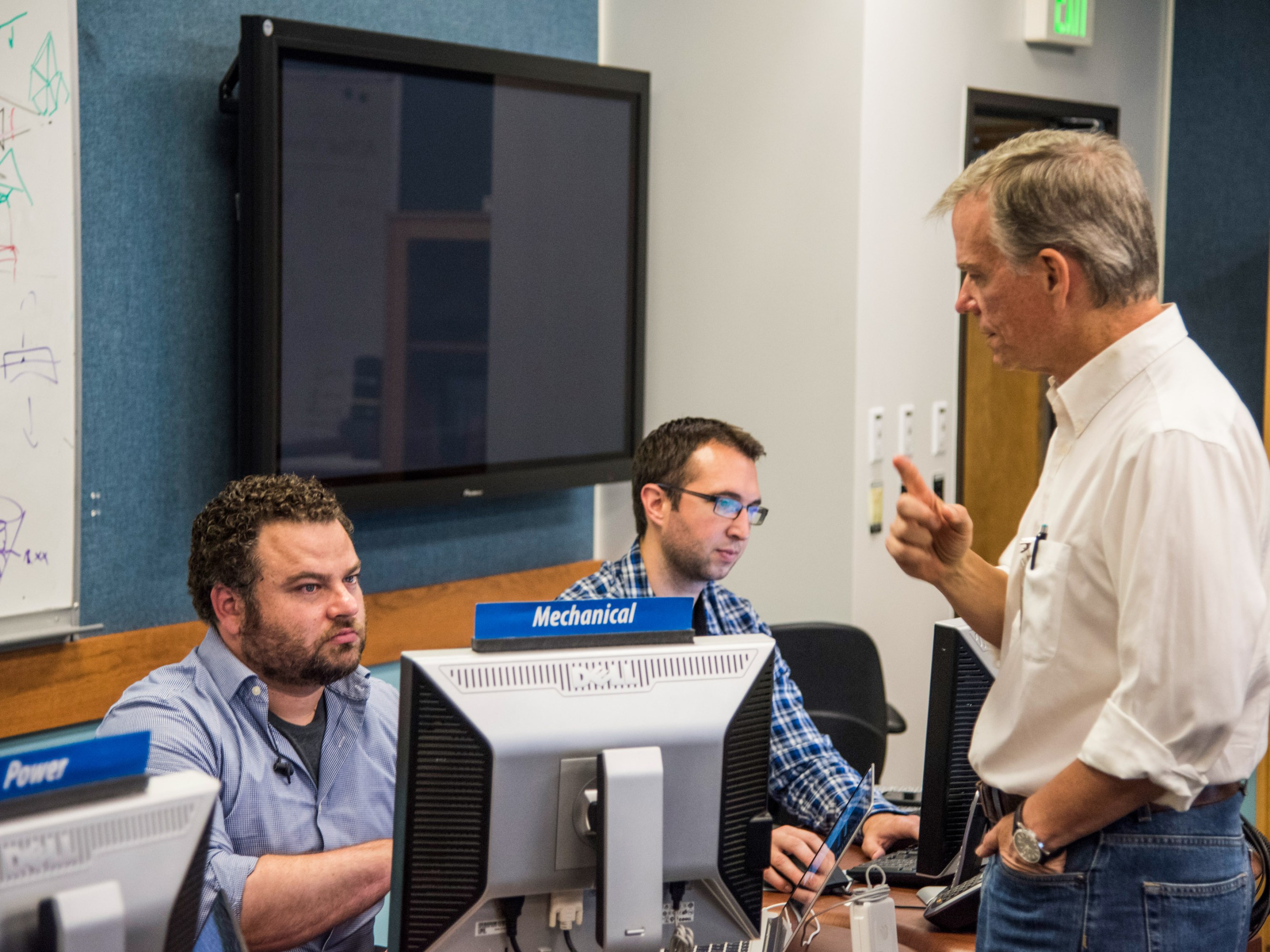
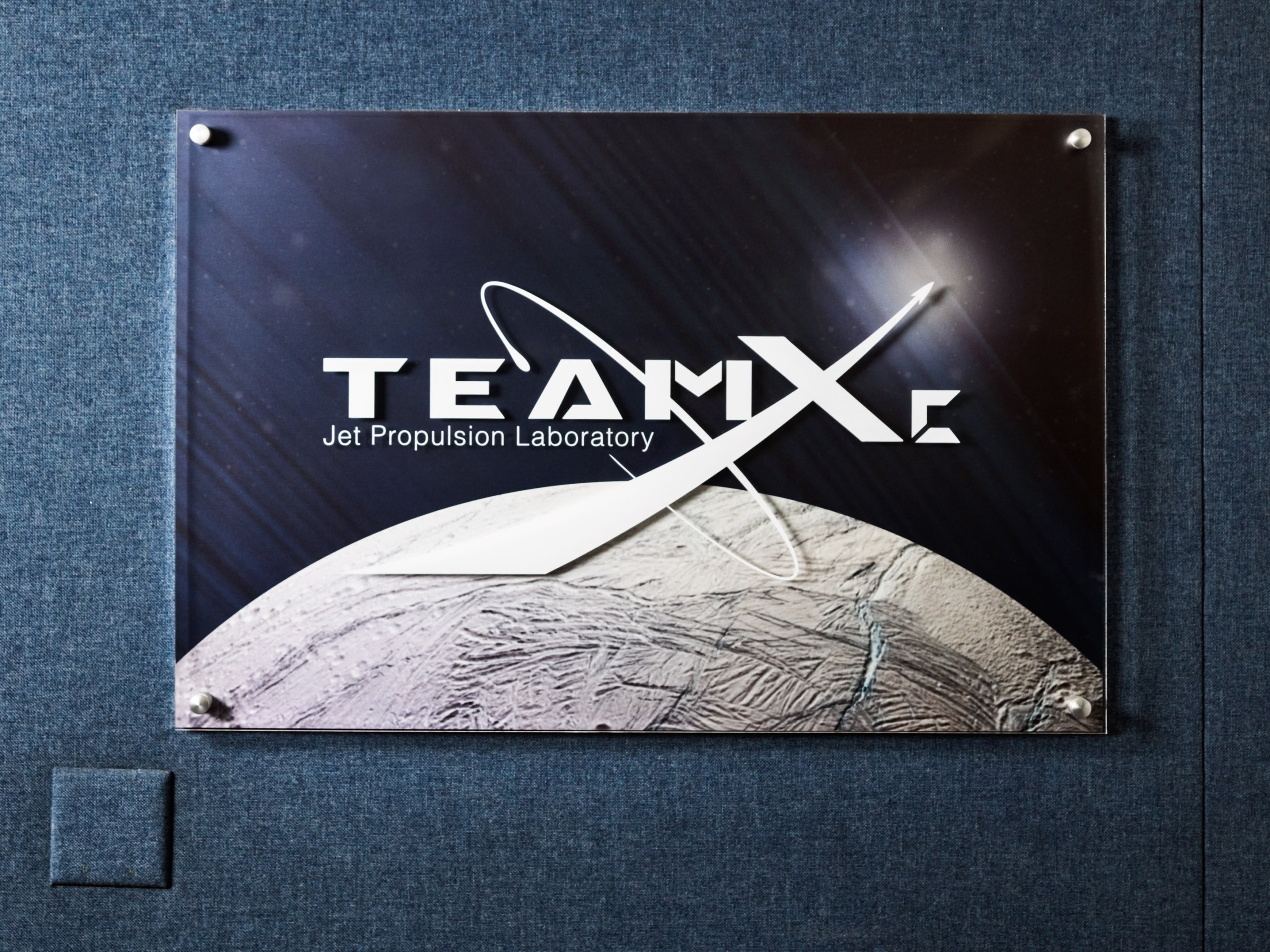
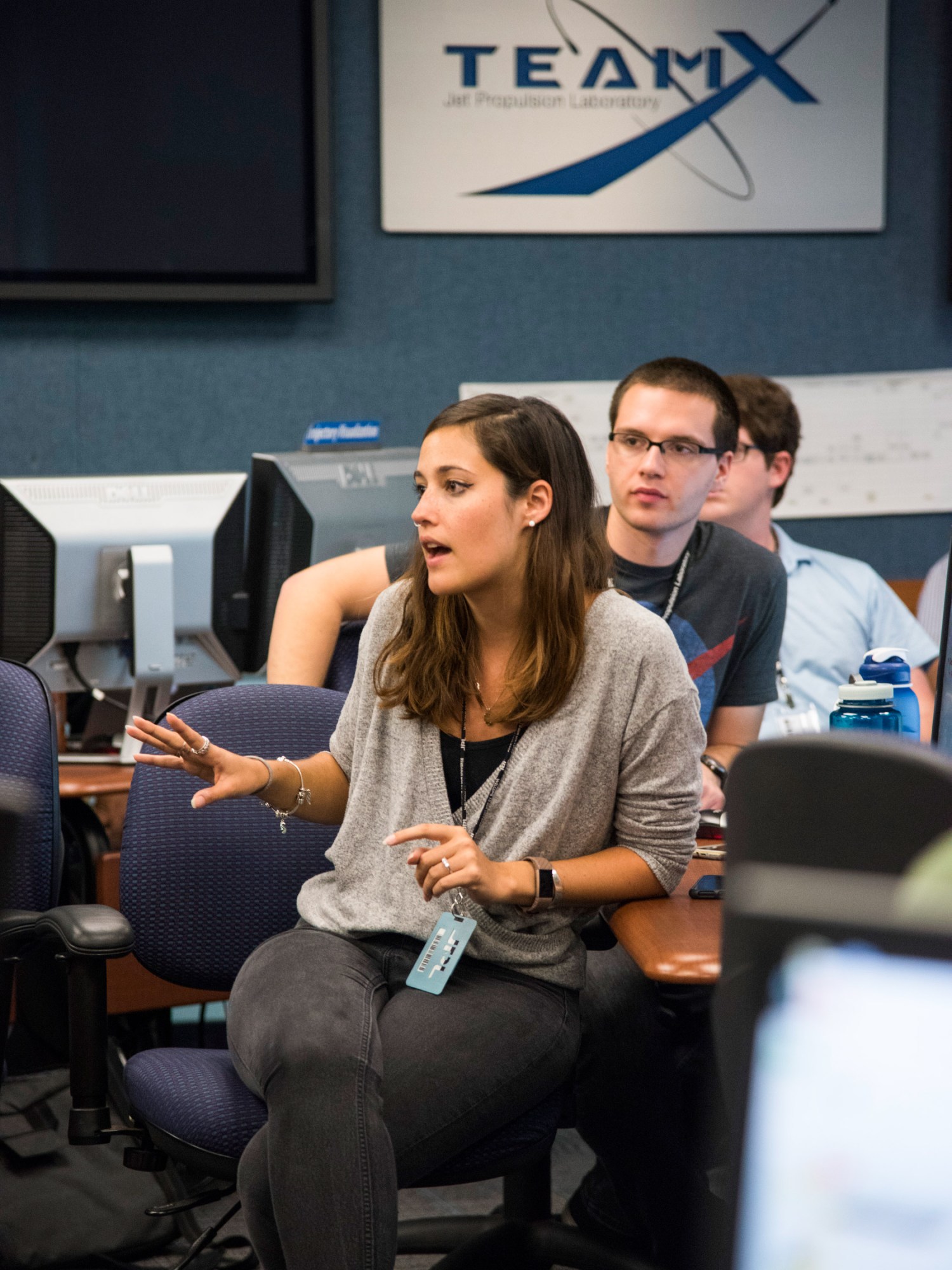
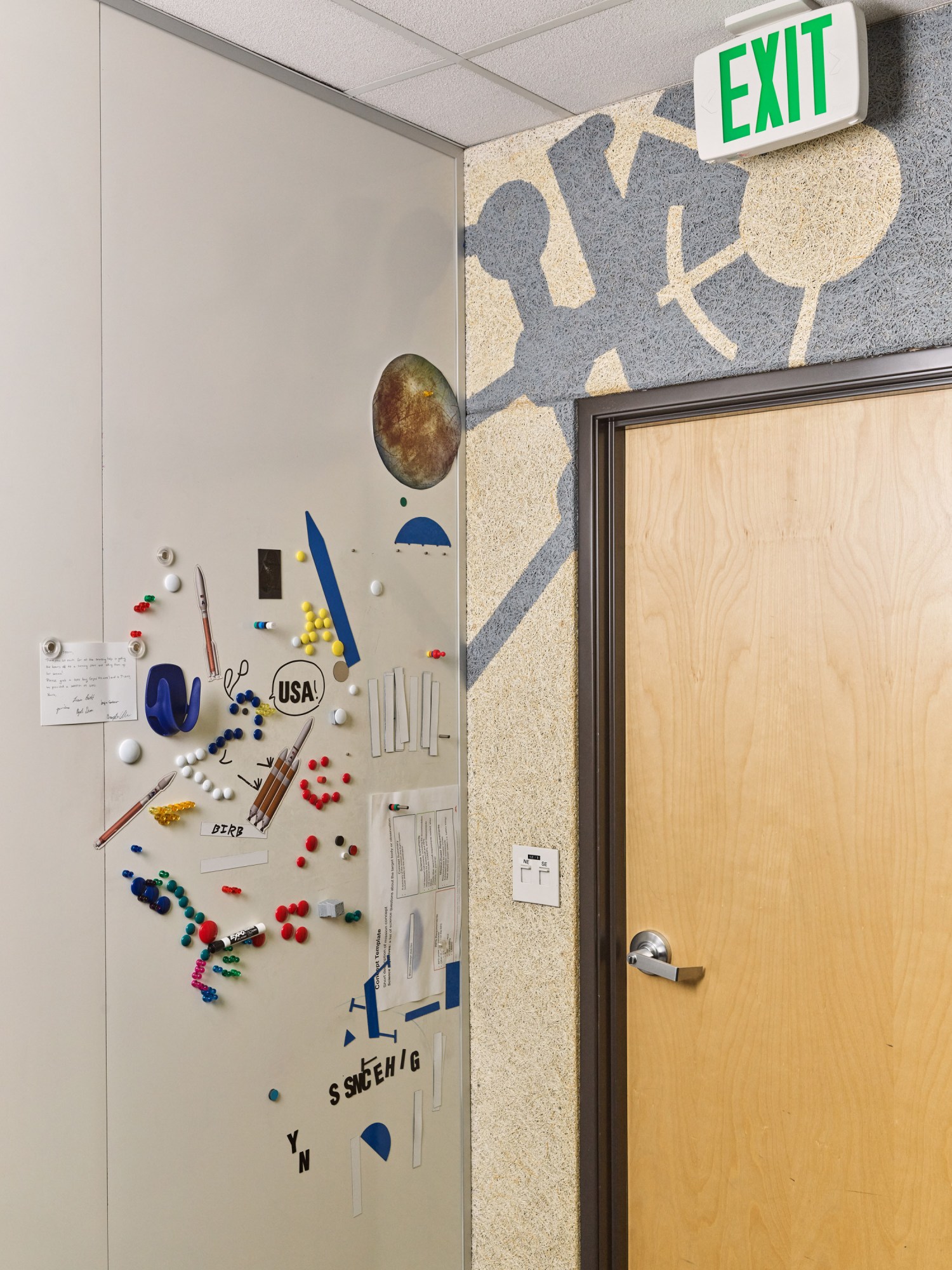
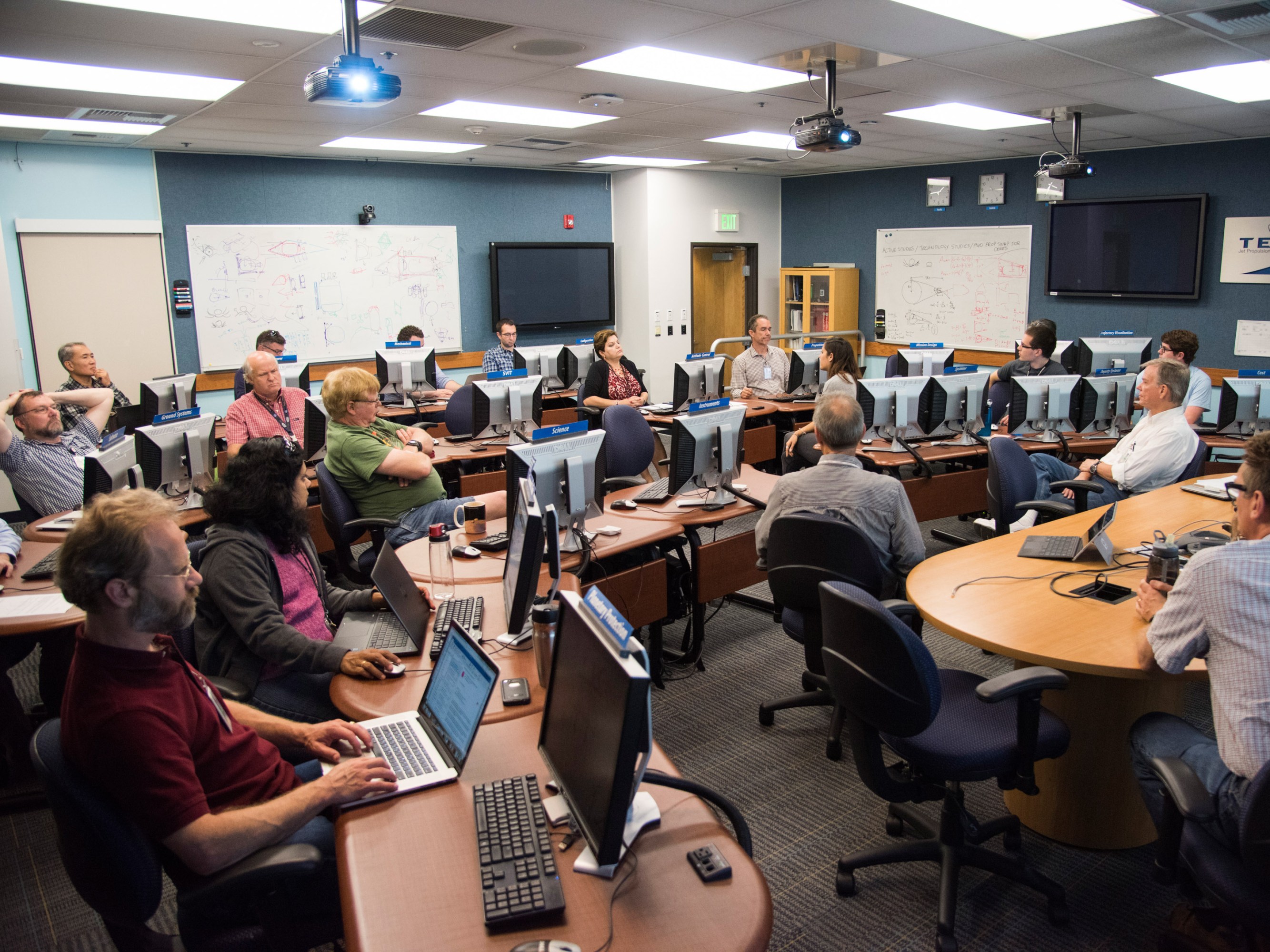
Two groups within the Innovation Foundry turn ideas into mature concepts for NASA: the A-Team (the A stands for “architecture”) defines the science objectives and devises the mission plan, and Team X designs the actual spacecraft.
And when it comes to designing a capable small spacecraft, engineers are up against formidable foes. Nash first noticed them during the NASA-funded 2016 concept studies. The agency had sent several of the prospective projects to Team X for development. For days Nash, who at the time was its lead engineer, worked alongside Alex Austin, the lead engineer for Team Xc, the Innovation Foundry group dedicated to small sats. Amid the din of spacecraft development, with consoles working though thermal, telecom, fuel, and computer issues—“That instrument won’t work” and “That mass is too high” and “That’s not enough power”—Nash and Austin felt they were beating their heads against a wall. Forget issues like radiation shielding or autonomy at Jupiter—they couldn’t even seem to get a cube sat into orbit around Mars, something we’ve been doing with large satellites for more than 50 years. Scientists wanted images at a certain resolution, but the cube sats couldn’t carry a camera capable of it. Once at their targets, they were unable to get data back to Earth. A small sat could reach its destination but would then just fly right on by it, because it had no way of slowing down.
After a particularly grim day in the project design center, they walked back to their desks, grumbling all the way, vexed and annoyed. Between the two of them, they had participated in hundreds and hundreds of studies, tackling practically every engineering problem a space program could muster—and still, the designs of these little shoeboxes proved resistant to closure.
Austin pulled out his desk chair, slumped into it, and leaned back in head-pounding thought.
“It’s those dead Europeans!” Nash exclaimed from his own desk.
I met Austin and Nash in Left Field to find out who these Europeans were and what, exactly, their problem was. Austin is young and beardless, where Nash’s beard is going gray. A Dumbledore/Harry Potter comparison is too facile, but not absurd.
“The thing that enabled small sats is the miniaturization of electronics,” says Austin. “And that’s great—but alone, it’s not enough for planetary missions, which have to deal with really hard physics first described by dead Europeans.”
Thousands of small sats fly above Earth today. They can be launched from the International Space Station, from small rockets, even from high-altitude balloons. Among the more high-profile of these spacecraft are the Starlink constellation (though the size of its individual satellites is growing with each iteration); Planet Labs’ Earth-imaging Dove satellites; the Cyclone Global Navigation Satellite System developed by NASA, the University of Michigan, and the Southwest Research Institute, which measures the wind speed inside hurricanes; and NASA and MIT Lincoln Laboratory’s TROPICS, a painful acronym for “Time-Resolved Observations of Precipitation structure and storm Intensity with a Constellation of Smallsats” (which does what the name suggests).
It is not a NASA-only club, either. Among others, the European Space Agency, the Indian Space Research Organization, and the China National Space Administration have launched cube sats to study everything from the weather to civil aircraft traffic. In 2020, the Japan Aerospace Exploration Agency launched one with two action figures on board, so they could be imaged in front of the Earth as part of a promotion for the Olympics and Paralympics.
Given such successes in Earth’s orbit, and NASA’s desire to launch less expensive missions more frequently, it surprises no one that scientists want to send small sats to orbit other worlds. But as Nash and Austin realized, it is not so simple.
You can start with pretty much any subsystem to see the limits. Consider the need for high-resolution images. The higher the resolution, the larger the aperture size of the camera must be, as the British physicist Lord Rayleigh determined in a famous equation in the 19th century. But small spacecraft can only hold cameras so large.
“If someone came to me and said they absolutely want to do a cube sat at Uranus, there is some mission there—I’m just not sure if it’s the mission they really want.”
Alex Austin, lead engineer for Team Xc, Innovation Foundry group
Even if you could find a way around this fundamental concept in optics, you’ve got to get your data home. High-resolution images use large amounts of data. As the quantity of data grows, so do the mass requirements of the telecom subsystem and the necessary power source. The antenna and commensurate power requirements are driven by the Friis transmission equation, worked out by the Danish-American engineer Harald Friis.

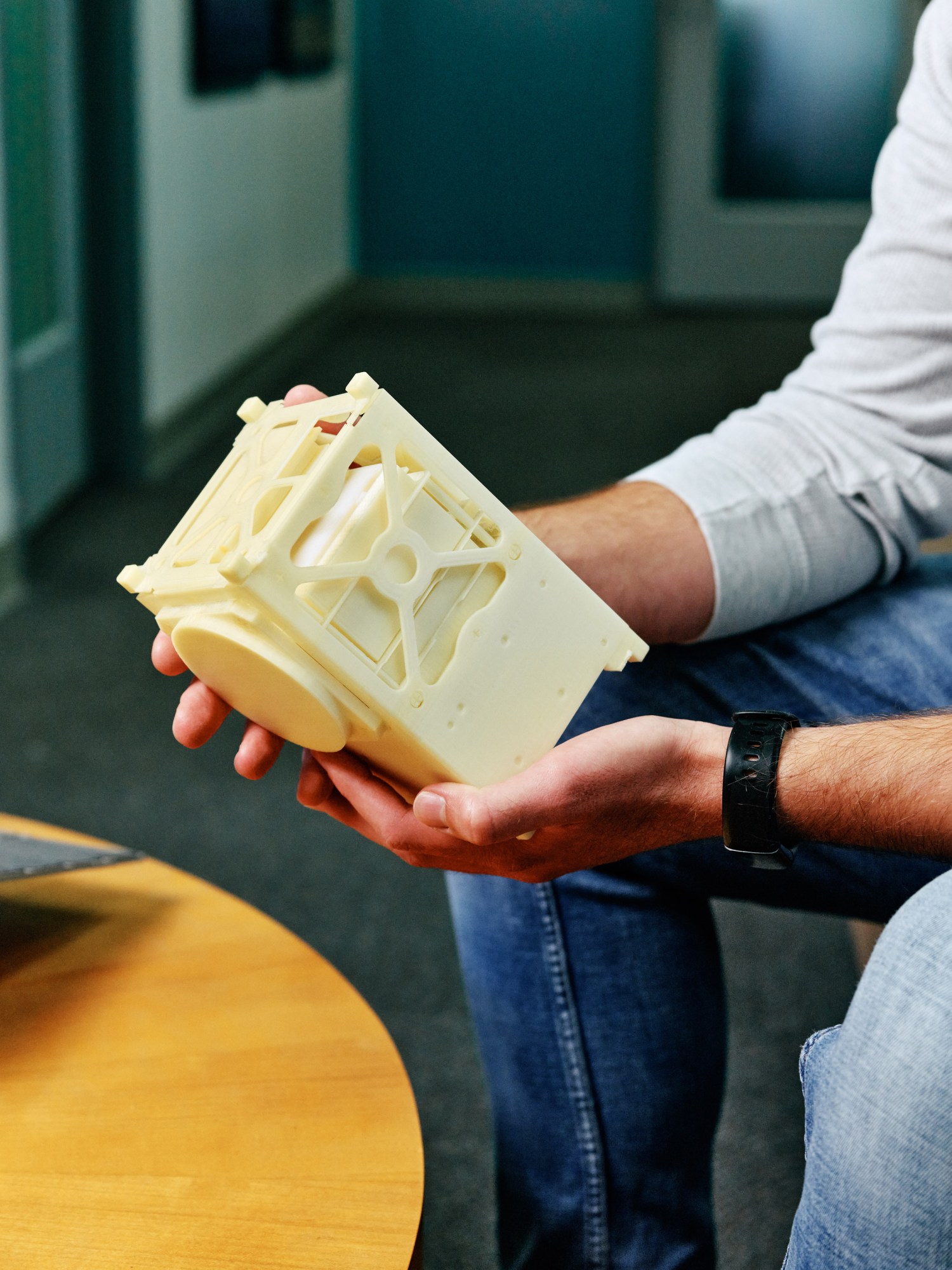
Augustin-Louis Cauchy, the French mathematician who founded the field of continuum mechanics, would insist on dedicating more spacecraft mass to withstanding the mechanical stress of launch. His equations for the distribution of forces through a material say that a six-pound cube sat, atop a Falcon Heavy with 5 million pounds of thrust, will need to be pretty tough.
As the spacecraft mass slowly creeps up, the reaction wheels necessary for pointing it this way or that likewise grow in size, as Isaac Newton and his laws of motion would explain. And the farther the small sat gets from the sun, the less solar energy it receives, as the Scottish physicist James Clerk Maxwell could (and did) tell you.
Then there is the temperature of the spacecraft. The requirements for thermal equilibrium, which it must maintain, vary on the basis of mass and volume. A hot spacecraft needs to dissipate the heat. A cold spacecraft needs to heat itself (which also affects the power subsystems). Principles articulated by the 19th-century Austrian physicist Ludwig Boltzmann describe the difficult thermal situation for a flying shoebox.
Perhaps the most daunting of all the dead Europeans is the Russian rocket scientist Konstantin Tsiolkovsky, because his rocket equation is so unforgiving. It calculates the change in a spacecraft’s velocity as it uses fuel and ejects exhaust. In short, a spacecraft’s mass diminishes as it uses propellant. The lower the mass, the faster the spacecraft flies. This becomes precarious when a spacecraft needs to slow down and enter orbit around a target: it needs more propellant yet, which requires a bigger tank to hold it, which requires more propellant to push the bigger tanks, and so on—and all this affects other subsystems like thermal protection, to keep the propellant at the correct temperature.
Overcoming all these problems becomes increasingly difficult as you travel farther from Earth. But, as demonstrated in 2018, it is not impossible with the right design.
“MarCO was our first Team Xc study,” says Kelley Case, head of the Innovation Foundry’s Concept Office, who joined us in Left Field. “At that point, there were not that many cube sat missions, and people were excited about it.” As originally envisioned, Case explains, drawing the mission in the air with her finger, MarCO would put two cube sats in Martian orbit to do radio occultation science, sending radio signals to each other as a way of studying the atmosphere. During the Team X process, however, engineers realized that it was infeasible for the MarCO craft to fly to Mars and enter orbit on their own.
“So the MarCO team pivoted, which is really important as a case study for other small sat missions,” she says. “They said, Okay, let’s not focus on what science we could do. What could we do with a cube sat at Mars, period?”
The answer: solve the communications blackout invariably faced by Mars landers. “InSight was its opportunity,” she says.
Austin calls MarCO a huge achievement, not only for what it did, but for what it forced scientists and engineers to do. “We are very proud of MarCO, but there is a reason that MarCO worked: It was a very focused mission. It was a flyby. They didn’t have to deal with a lot of these physics problems.” It is not that exploring other planets with small sats is impossible, he explains. “If someone came to me and said they absolutely want to do a cube sat at Uranus, there is some mission there—I’m just not sure if it’s the mission they really want.”
SIMPLEx missions are standalone projects; a small sat must address all the problems of classical physics on its own (once it gets into space). A new mission class could help solve that, says Austin. “There is no medium class after SIMPLEx. You jump straight to Discovery. I would argue that NASA should consider something that is in the middle that would allow you to conquer a few more dead Europeans.” Such a class could afford larger spacecraft to ferry small sats to bodies, for example—offloading Tsiolkovsky—or carry communications relays, thwarting Friis. (In a similar fashion, there has been talk of using NASA’s Lunar Gateway space station, currently slated to launch in 2025, to deploy small spacecraft from lunar orbit.)
For now, the scientific community should take note of small sats’ successes over the Earth. “Earth science small sat missions are leading the way for planetary ones,” Austin says. They deal with vastly fewer dead-European problems, yes—but Earth scientists are also thinking in new and interesting ways about how to leverage the unique strengths of small sats, rather than simply trying to stuff big-satellite science into a small box.
For example, the Investigation of Convective Updrafts (INCUS) mission, currently slated to launch in a few years, will place three cube sats in sequential orbit around Earth to study how storms form. The cube sats will not contain the most powerful radars ever built, but they will do something those radar systems cannot: visit the same place in rapid succession, seeing how storms evolve in a short period of time.
“It’s not the same question a large satellite might ask, but better,” says Nash. “It is an orthogonal question. It is a question that has never been asked, because you couldn’t ask it with the other system.”
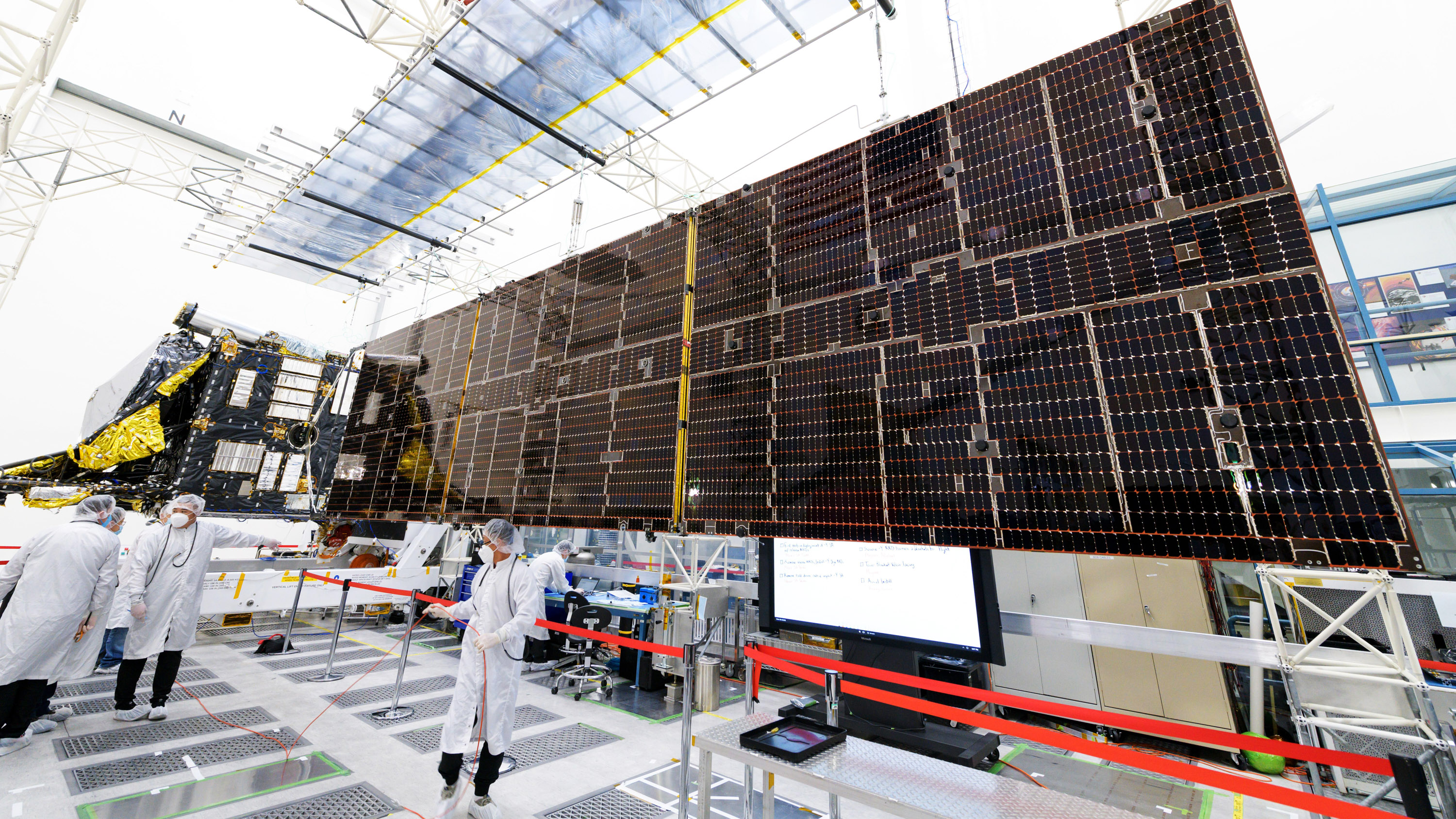
So far, NASA has flown only two SIMPLEx missions, both of which failed in their primary science objectives, and neither of which was sent to targets outside the Earth-moon system. And only two of the 10 US and international cube sats that launched on the Artemis 1 moon mission flew without issue. There have also been great successes. One week before NASA’s DART intentionally crashed into the asteroid Dimorphos, it released a cube sat called LICIACube, which was built by the Italian Space Agency. The shoebox-size probe, having hitched a ride and thus evaded the tyranny of Tsiolkovsky, successfully imaged DART’s final moments.
More missions are on the way. Annual budgets fluctuate, but NASA continues to fund small sats at or near the $100 million levels promised by Zurbuchen. Although most of the money goes to spacecraft studying Earth, the sun, and the stars, planetary science remains an agency priority. Among the funded projects is Lunar Trailblazer, a SIMPLEx mission to map water on the moon, which should launch next year.
Other countries have upcoming projects of their own. Next year, for example, the European Space Agency will launch Hera, a follow-on to the DART mission. It will carry two cube sats to study the composition and structure of the asteroid—precisely the sort of mission that would be necessary if a killer asteroid were inbound.
These may seem like small steps for small spacecraft. They are certainly still far from the vision of swarms skimming along Saturn’s rings and sampling the ice spewing from its moon Enceladus. But it is exploration nonetheless.
David W. Brown is a writer based in New Orleans. His next book, The Outside Cats, is about a team of polar explorers and his expedition with them to Antarctica. It will be published by Mariner Books.




